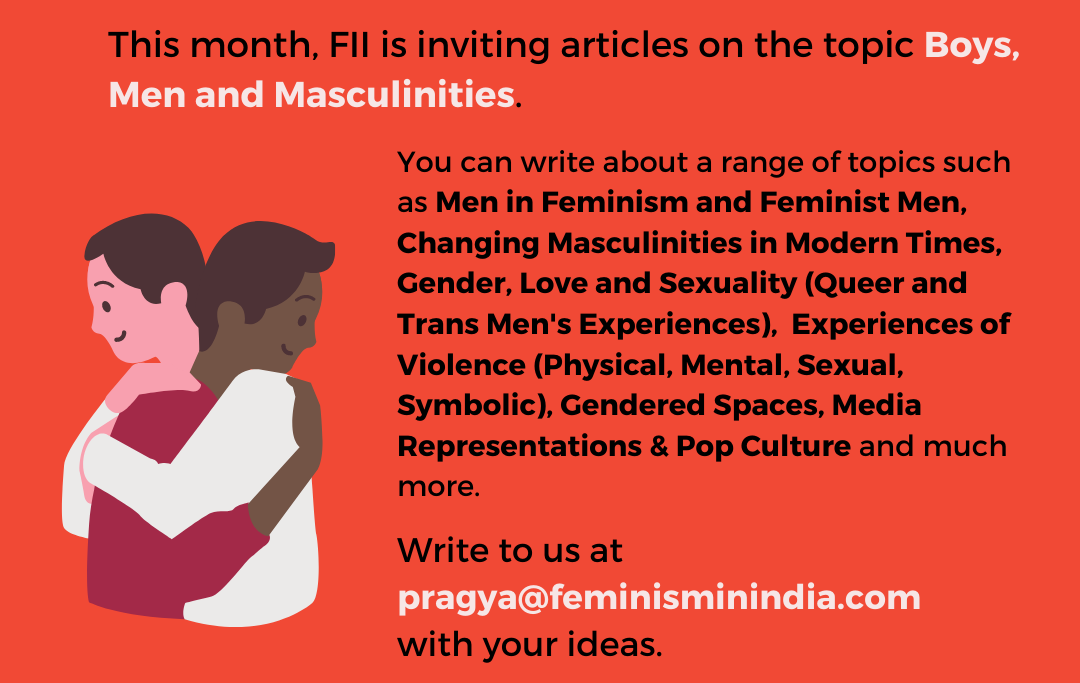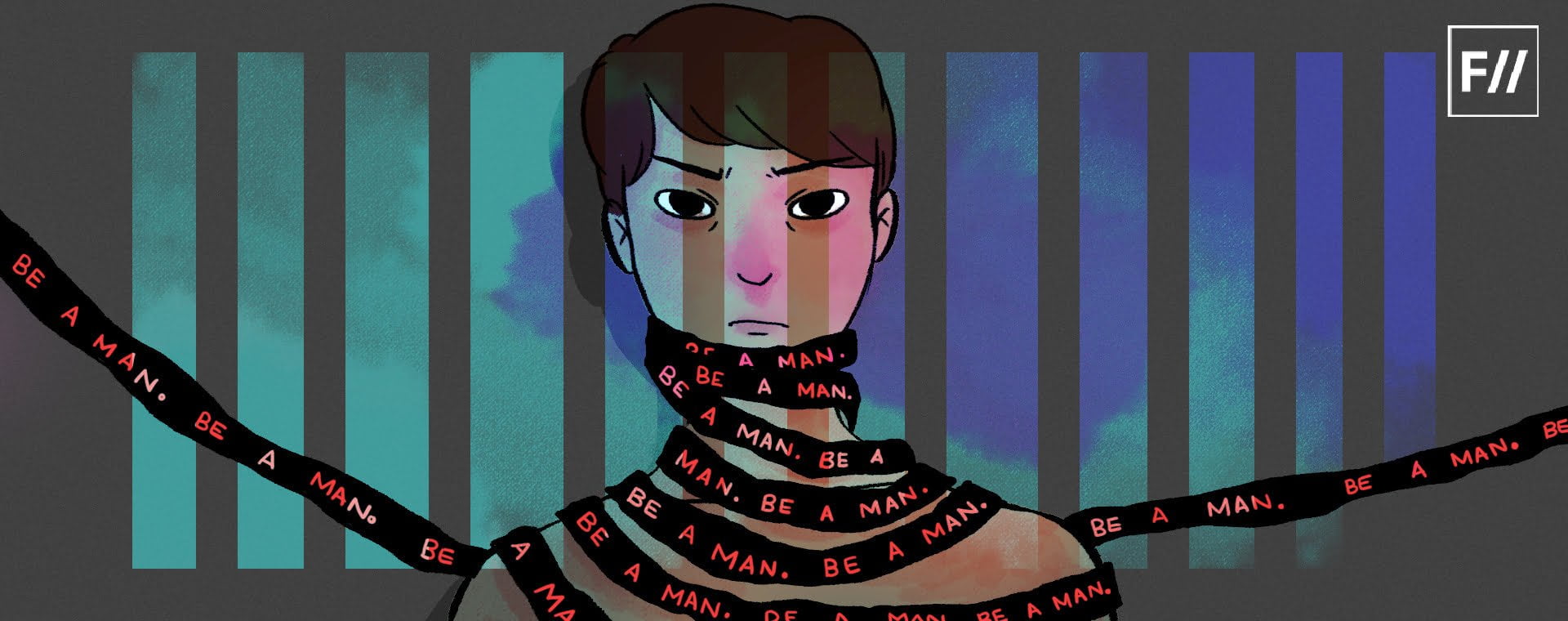Studies of men and boys, and the social construction of masculinities have been evolving since the last forty years or so. It largely took into account the dynamics of patriarchy as well as the common anxieties among men and boys. It questioned whether men of different castes, classes, cultures, races, sexualities, generations, ethnicities etc., had similar experiences of power and dominance which is offered to them by the patriarchal system throughout the world.
The concept of a “hegemonic masculinity” was formulated two decades ago to understand the notion of an “ideal man” or the “most honoured way of being a man”, to theorize the relationship among different masculinities and to trace the changes that it has undergone through generations vis-a-vis political leadership, violence, changes in family and sexuality, media and culture, thereby revealing the plurality of masculinities and the complexities of gender construction for men.
This concept simultaneously gave rise to the conflicting idea of “subordinate masculinities” that included those patterns of practice that fell short of fitting within the domain of the “real man” ideals. These were usually unapproved socially, especially if they incorporated ‘feminine’ essence or behaviour.
Also read: A Feminist Approach To Masculinity: How Schools Impose Binaries
However, with men entering the territories that were earlier thought as exclusive for women, for example the beauty, nursing or culinary industries, people all over the world have now started writing and understanding the changes that have occurred within the prior perceptions and practices of dominant forms of masculinity, thereby challenging traditional gender roles. Older forms of masculinity are gradually being replaced by new ones and are being influenced by other socio, economic, political and technological advancements.
For September 2020, FII is looking for article submissions on the topic of Boys, Men and Masculinities, to highlight the different experiences of masculinity that manifest themselves in our everyday lives which have either challenged, subverted or even perpetuated traditional forms of ‘manliness’.
Here are some possible pointers which might help you write your articles,
- Men in Feminism and Feminist Men (Biographies, Accounts)
- Intersectionality: Caste, Class, Gender, Disability, Sexuality, Conflict
- Changing Masculinities in Modern Times
- Gender, Love and Sexuality (Queer and Trans Men Experiences)
- Experiences of Violence (Physical, Mental, Sexual, Symbolic)
- Mental, Emotional and Physical Health
- Spaces (Washrooms, Commute Vehicles, Other Gendered Spaces)
- Body Image
- Experiences in Schools and Campuses
- Hobbies And Habits
- Work and workplace
- Law and Policy
- Role of Religion, Ethnicity, Community
- Childhood and Family
- Media and Pop Culture Influence
- Role Models for a Feminist Masculinity
You can send us your submissions to pragya@feminisminindia.com. This list is not exhaustive. Please feel free to write about other topics, which we might have missed listing.
Also read: Arnab Goswami – Our Prime Time Poster Boy For Toxic Masculinity…
We understand that some of you might be uncomfortable writing about your personal experiences. You can let us know in your submission mail whether you would want to remain Anonymous when we publish your articles.
About the author(s)
Feminism In India is an award-winning digital intersectional feminist media organisation to learn, educate and develop a feminist sensibility and unravel the F-word among the youth in India.




